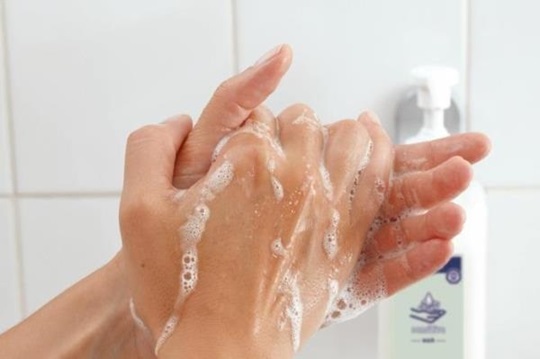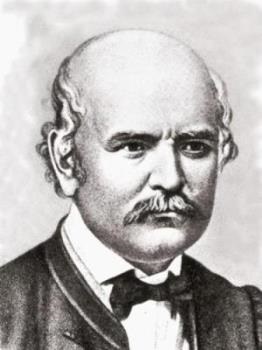Simplicity lies at the heart of HARTMANN solutions. For example, we know it’s possible to reduce certain infections by up to 40 percent through proper hand hygiene practices. But if it’s so “simple”, why is it so hard?
Handling hygiene

According to the American Centers for Disease Control and Prevention (CDC), healthcare providers might need to clean their hands as many as 100 times per 12-hour shift depending on the number of patients and intensity of care.
The World Health Organization (WHO), however, finds that most compliance rates are “most frequently well below” 40 percent. This is often due to various environmental barriers including time pressure, lack of resources (more so in developing countries) as well as the workflow feasibility of what some experts call a “one-size-fits-all” hand hygiene approach.
Around the world, clinicians, nurses, and healthcare professionals are fighting the same fight, with both hands, but it’s not working. How is it that a “simple” solution can be so hard, at a time when we need it more than ever?
The World Health Organization (WHO), however, finds that most compliance rates are “most frequently well below” 40 percent. This is often due to various environmental barriers including time pressure, lack of resources (more so in developing countries) as well as the workflow feasibility of what some experts call a “one-size-fits-all” hand hygiene approach.
Around the world, clinicians, nurses, and healthcare professionals are fighting the same fight, with both hands, but it’s not working. How is it that a “simple” solution can be so hard, at a time when we need it more than ever?
The birth of a simple solution

“The year 1847 was a turning point for hand hygiene,” said Dr. Gian Carlo Sciuchetti, managing director of BODE Chemie GmbH and its BODE SCIENCE CENTER, HARTMANN’s Scientific Centre of Excellence. “That year, physician Ignaz Semmelweis discovered that the act of hand washing saved the lives of mothers after childbirth. That was the starting point of understanding how to stop the spread of infections.”
But nearly 170 years later, healthcare faces a much bigger challenge.
The rapid emergence of resistant bacteria endangers the efficacy of antibioticsi, and only increases the urgency for better hand and surface disinfection practices. There are estimated to be more than 1.4 million cases of hospital acquired infections (HAIs) at any given time, though this figure is likely to be much higher in realityii. According to the European Centre for Disease Prevention and Control (ECDC), infections caused by bacteria that are resistant to antimicrobials lead to about 25,000 deaths in the EU every year. Luckily, national initiatives like “AKTION Saubere Hände” (The Clean Hands Campaign), global guidelines like WHO’s “5 Moments for Hand Hygiene”, and the HARTMANN Division of Disinfectionare dedicated to ensuring that hand hygiene practices and hand hygiene compliance can be improved.
But nearly 170 years later, healthcare faces a much bigger challenge.
The rapid emergence of resistant bacteria endangers the efficacy of antibioticsi, and only increases the urgency for better hand and surface disinfection practices. There are estimated to be more than 1.4 million cases of hospital acquired infections (HAIs) at any given time, though this figure is likely to be much higher in realityii. According to the European Centre for Disease Prevention and Control (ECDC), infections caused by bacteria that are resistant to antimicrobials lead to about 25,000 deaths in the EU every year. Luckily, national initiatives like “AKTION Saubere Hände” (The Clean Hands Campaign), global guidelines like WHO’s “5 Moments for Hand Hygiene”, and the HARTMANN Division of Disinfectionare dedicated to ensuring that hand hygiene practices and hand hygiene compliance can be improved.
When science met compliance

“Research told us where there was room for improvement. We knew that a multi-modal approach, as recommended by the WHO, was best,” said Gian Carlo. “But, we wanted to keep the approach simple and tailor made.”
HARTMANN’s multi-modal approach to hospital hygiene compliance was piloted in 2013 in Spain. It was called IMPULSA. According to Gian Carlo, the programme focused on equipment placement, as well as trainings on how and when to disinfect the hands.
“We also wanted to have convenient clinical practice evaluations,” said Gian Carlo. “This way professionals could measure their own compliance progress. And now, we have an eHealth application for that.”

When translated, the Spanish term “impulsar” accurately means “to push” or “to move forward”. And that is exactly what happened. To date, the programme has been piloted in more than 150 other hospitals in Spain. Additionally, more than 9,000 healthcare professionals have been trained on hand hygiene, as well as 24 groups of healthcare professionals and managers. Now, across the country, more than 100 nurses help to make up hospital compliance teams. And today, the concept is known as The Evolution Concept. Launched in 2016, it is currently being implemented in hospitals across Germany and other European cities.
“We realise the challenges that healthcare professionals face every day in trying to improve compliance rates, so our main goal is to support them,” said Gian Carlo. “They are the key to compliance and they have the power to impact an entire hospital ecosystem. Our mission is simple. Help them go further.”
iVendola, C. Lee, (April 2015). ‘The Antibiotic Resistance Crisis. Part 1: Causes and Threats.’ US National Library of Medicine National Institutes of Health (NCBI). Retrieved from:
https://www.ncbi.nlm.nih.gov/pmc/articles/PMC4378521/
iiThe World Health Organization (WHO). ‘Evidence for Hand Hygiene Guidelines.’ WHO. Retrieved from:
http://www.who.int/gpsc/tools/faqs/evidence_hand_hygiene/en/
